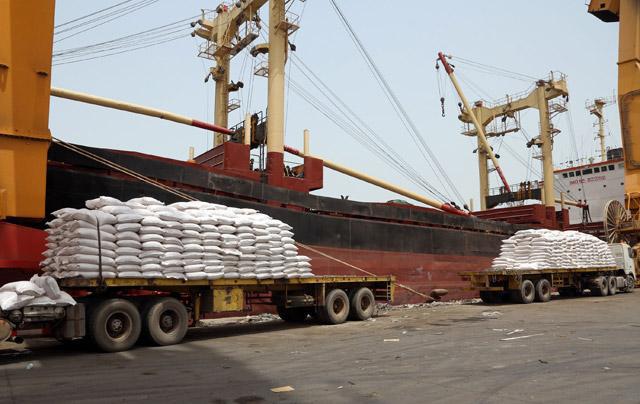You are here
Intra-regional trade within Red Sea area on the rise — report
By JT - Sep 09,2017 - Last updated at Sep 09,2017

Intra-regional trade within the Red Sea region is improving but still falls behind other regions, according to a research recently published by the Red Sea Foundation (File photo)
AMMAN — Intra-regional trade within the Red Sea region is improving but still falls behind other regions, according to a research recently published by the Red Sea Foundation.
The report showed that intra-regional trade flows between Red Sea member countries have increased significantly as a share of total merchandise exports over the past 15 years, roughly doubling from 8 per cent in 2000 to 16 per cent in 2015, according to a statement from the Red Sea Foundation.
Nevertheless, the Red Sea’s intraregional share of trade still ranks well behind other regions, such as the EU (63 per cent), NAFTA (52 per cent) and East Asia & Pacific (45 per cent), the report showed.
Intraregional trade in non-oil merchandise is higher, at 35 per cent, still well behind the shares of the EU, NAFTA and East Asia & Pacific trading blocs.
Regional trade within the Red Sea is heavily weighted toward GCC countries, with over half of intra-regional Red Sea non-oil exports originating from the UAE (40 per cent) and Saudi Arabia (16 per cent).
The largest bilateral exports flows of merchandise goods are the UAE to Oman, the UAE to Iraq, the UAE to Saudi Arabia, Saudi Arabia to the UAE and Oman to the UAE. Kenya, the largest sub-Saharan African exporter to the Red Sea region, accounts for only 2 per cent of the total, the report added.
“The Red Sea Region will be a crucial theatre of global history in the years ahead. It deserves extensive attention from the global community,” Lawrence Summers, Charles W. Eliot University professor and president emeritus at Harvard University, was quoted in the statement as saying.
A former US Secretary of the Treasury, Summers is a member of the Red Sea Foundation Board of the Trustees.
“The Red Sea region’s mix of wealth and low cost base, as well as diversity in endowments and production capabilities, should generate strong incentives for intra-regional trade,” Maliha Hashmi, executive director of the Red Sea Foundation, said in the statement.
“This study suggests that more should be done to help the region better integrate with the world economy and, like other economically dynamic regions, take full advantage of the potential benefits of international trade,” she added.
One explanation for the lack of intra-regional trade is the similar resource endowments, production capabilities and export structures among the Rea Sea economies, according to the report.
GCC exports focus around energy-intensive industries and hydrocarbons while Sub-Saharan experts are weighted more toward agriculture and minerals.
However, the report notes that the spread of per-capita GDP across the region should generate incentives to engage in trade driven by product differentiation. For example, around 30 per cent of Sub-Saharan Africa’s non-oil exports are food products and GCC countries are relatively large importers of food.
Yet, GCC countries source the majority of their food from outside the Red Sea region despite the fact that transport costs should be lower importing from neighbouring Red Sea countries.
Equally, the GCC countries import a significant amount of manufactured goods and machinery and transport equipment, yet no Red Sea economy has developed the industrial capabilities to meet this demand.
“For the Rea Sea region, regional trade integration is a logical first step towards greater global trade integration beyond commodities,” Hashmi noted.
“Understanding the dynamics, opportunities and challenges that characterise this diverse market is key to informing the policies and initiatives to encourage that integration,” she concluded.
Related Articles
JOHANNESBURG — A $1.2 trillion free-trade area stretching across 26 African countries from Cape Town to Cairo is a stepping stone to uniting
AMMAN — Jordan’s economic growth is forecasted to edge up to 2.5 per cent by 2020 after suffering a slowdown by 0.3 per cent in the past two
AMMAN — Minister of Industry, Trade and Supply Tareq Hammouri and the United Arab Emirates' Minister of Economy Sultan Bin Saeed Al Mansoori
















